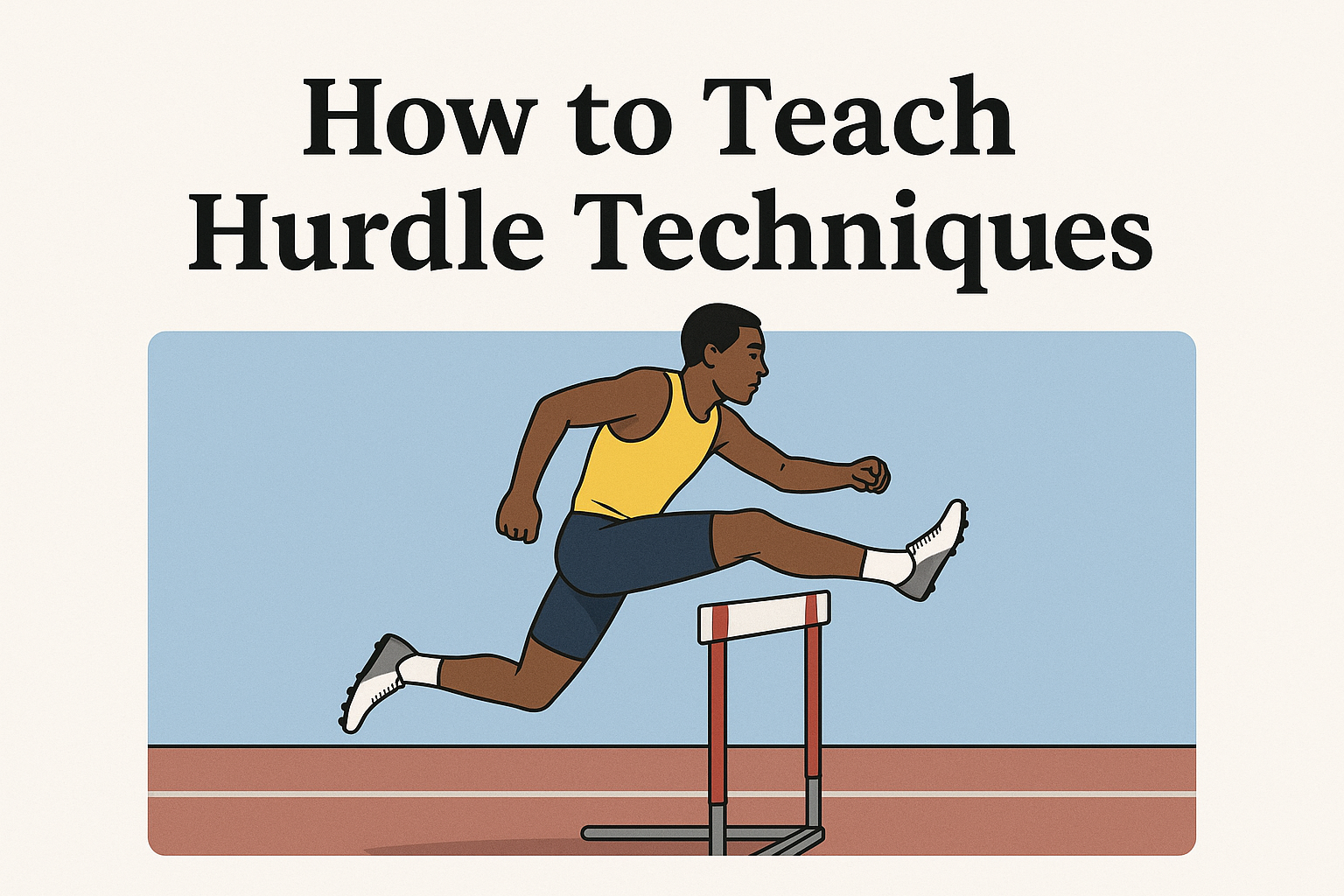Teaching hurdle techniques is more than just instructing athletes to jump over barriers—it’s an art and science that requires patience, precision, and proper methodology. Whether coaching beginners or fine-tuning elite athletes, understanding the core principles of hurdling and knowing how to break them down into teachable steps can make all the difference in an athlete’s performance.
This guide explores how coaches can effectively teach hurdle techniques using a step-by-step approach, focusing on form, drills, and athlete development.
Introduction to Hurdling
Hurdling is a track and field event that combines sprinting with jumping over obstacles (hurdles) placed at measured intervals. Events like the 100m hurdles (for women), 110m hurdles (for men), and 400m hurdles require athletes to maintain speed while clearing each hurdle with efficiency.
For coaches, understanding the biomechanics and rhythm of hurdling is crucial. Teaching hurdle technique effectively starts with breaking the movement down into its components and tailoring the training based on the athlete’s age, skill level, and physical capabilities.
Understanding the Phases of Hurdling
Before diving into drills or practices, it’s essential for a coach to grasp the basic phases of hurdling. Teaching each phase separately allows athletes to focus on mastering one element at a time.
1. Approach Run
The approach run refers to the sprinting motion leading up to the first hurdle. It’s critical for setting up rhythm and proper stride length. A smooth and powerful approach ensures the athlete is in the optimal position to clear the hurdle efficiently.
2. Take-Off
The take-off is when the hurdler leaves the ground to clear the hurdle. Emphasis should be placed on low, quick take-off mechanics rather than vertical jumps. The take-off leg should be strong and stable, pushing from the ball of the foot.
3. Flight Over the Hurdle
In the flight phase, the lead leg (the first leg to go over) should be extended with the toe pointed up, while the trail leg follows in a bent, sweeping motion. Arms should mimic natural sprinting movements to maintain balance and momentum.
4. Landing and Recovery
Upon landing, the hurdler must resume sprinting as quickly as possible. Recovery is just as important as take-off because delays here disrupt the rhythm and can slow overall race time.
Teaching Hurdle Techniques: Step-by-Step
When teaching hurdle technique, a coach should focus on progression, form, and consistency.
Step 1: Start with Hurdle Drills Without Hurdles
Especially for beginners, using hurdle drills that simulate the motion without actual hurdles helps athletes understand the form without the fear of hitting the barrier. Common introductory drills include:
- Lead Leg Swings: Teaches proper extension and hip flexibility.
- Trail Leg Circles: Develops the sweeping motion of the trail leg.
- Marching Over Mini-Cones: Reinforces body posture and leg motion.
Step 2: Introduce Low Hurdles or Adjustable Hurdles
Lowering the height of hurdles at the start of training helps build confidence. Coaches should focus on:
- Teaching correct hurdle clearance mechanics
- Encouraging fast, aggressive running between hurdles
- Promoting consistent stride patterns
Step 3: Emphasize Arm Action and Posture
A common mistake among new hurdlers is poor upper-body control. Teach athletes to:
- Keep arms tight and fluid
- Avoid crossing the body with arm movements
- Maintain an upright posture, avoiding leaning excessively over the hurdle
Step 4: Train Rhythm and Spacing
Hurdling is all about rhythm. Once the technique is sound, coaches should help athletes develop a consistent stride pattern between hurdles. For sprint hurdles (e.g., 100m/110m), athletes typically take three strides between hurdles, while longer races like the 400m hurdles require a stride pattern tailored to the athlete.
Use markings or training hurdles to simulate race spacing and improve rhythm.

Important Drills for Developing Hurdle Technique
- Hurdle Mobility Drills
Improve flexibility and range of motion. Examples include walking over hurdles, lateral hurdle steps, and high-knee drills over low barriers. - Fast Trail Leg Drill
Helps quicken trail leg recovery and minimize air time. - Lead Leg Isolation
Focus on only the lead leg movement to enhance knee drive and foot placement. - Hurdle Walkovers and Stepovers
Excellent for warming up and improving muscle memory.
Coaching Tips and Cues
Here are a few handy coaching cues and strategies when teaching hurdle techniques:
- “Snap the trail leg down”: Helps quicken descent after clearing the hurdle.
- “Stay tall between hurdles”: Encourages upright running posture.
- “Attack the hurdle, don’t jump it”: Reinforces the concept of aggressive yet smooth clearance.
- “Lead with the knee, not the foot”: Prevents overreaching or poor form.
- Use video analysis to identify technical flaws and improvements.
- Celebrate small wins, especially when coaching youth or beginner athletes.
Adapting Training for Different Athletes
Every athlete is different. Younger athletes may need more time developing flexibility and coordination, while more advanced hurdlers might require technical refinement.
- For young or novice hurdlers, focus on foundational drills and simple techniques.
- For intermediate athletes, introduce competitive drills, starts, and race simulation.
- For elite hurdlers, emphasize precision, split times, and in-depth video breakdowns.
Common Mistakes and How to Fix Them
Even seasoned athletes can fall into bad habits. Here are a few frequent errors and coaching solutions:
| Mistake | Correction Tip |
|---|---|
| Jumping too high over hurdles | Lower hurdle height temporarily to encourage a flatter trajectory |
| Not snapping the trail leg down | Use trail leg drills and hurdle scoots |
| Losing rhythm between hurdles | Implement stride pattern drills and timing cues |
| Poor lead leg mechanics | Focus on lead leg isolation drills |
Conclusion
Teaching hurdle techniques effectively is about more than technical drills—it’s about understanding the athlete, building confidence, and fostering consistency. From developing proper lead and trail leg mechanics to improving rhythm and timing, every part of the process matters.
With the right progression, patience, and communication, coaches can help hurdlers reach new heights—literally and figuratively.
